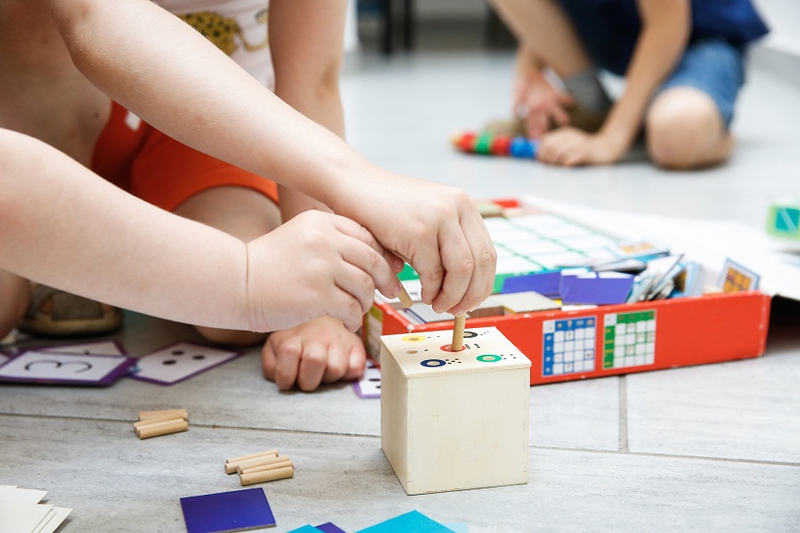When it comes to teaching caustic children, there are many challenges and difficulties. Autism Spectrum Disorder (ACD) refers to a complex, multi-layered neurological disorder that varies from person to person. Each child on the spectrum has their own needs and they will also respond to teaching methods differently, so how to teach an autistic child will be met will much trial and error, but there are a few strategies that seem to work with many children to help them reach their full potential.

Tips to Teach an Autistic Child
Need for Structure
When schedules are predictable, children with autism will feel less stress, anxiety, and confusion. Having a solid structure that they can rely on will make it easier for children to build upon their strengths and allow them to be more independent.
Ways to maintain structure with children on the spectrum include keeping a set routine both at school and in the home. Visual cues are also helpful in creating structure. You can use checklist with photos to make them know the time of day and the activities they are to partake in, helping children better understand what is expected of them. When creating activities, they should be easily completed with the child's attention span taken into consideration and when it is time to transition from one activity to the next should be predictable and regular.
Limit Distractions
They are many things that can become a major distraction to children with autism that would otherwise go unnoticed with other children. People entering or leaving a room, lights, announcements, alarms, noises from the hallway and even smells can interfere with a child's concentration and hinder their ability to learn.
Some ways to avoid distraction is to have specific areas designed for certain activities. Avoid moving furniture around, keep seating arrangements consistent and all classroom items and materials should be kept organized. How to teach an autistic child in a group setting can be more challenging if they become overwhelmed. Some children on the spectrum will remain anxious if there are others sitting behind them, so it is best to arrange their seats at the end of a row. Noise levels should be limited as well as sudden movements.
Pay Close Attention to Behavior
Children with autism have more difficulty expressing themselves and therefore will communicate more effectively through their behavior.
So the best way to teach an autistic child is to allow them to teach you what works best for them. You want to encourage their good behavior by rewarding them for good behavior and avoid punishments. Role playing is an ideal way to teach appropriate behavior as well as allowing them to become more flexible. Pay particular attention to what cause them stress and what they like and dislike. Use their likes to help teach them about various subjects. Limit their stress and chances of bad behavior by giving them plenty of notice when activities are about to change or will be interrupted. Allow them to take on leadership roles where they can harness their strengths. Some children will be more successful in the classroom when they are able to learn within their own framework. Allow them to stand, walk or hold onto items that will give them more confidence in participating in the classroom.
Teach Visually
As mentioned above, most children with autism think more clearly in pictures, so visual teaching can help them be more successful in the classroom.
Unlike other children who learn with words, children on the spectrum will first learn their language through pictures. Use visual pictures to demonstrate words to children by attaching cards to the words on items to signify nouns. Many children with autism will also be able to memorize long phrases and stories before they are able to comprehend them, because some are better at learning through phonics as opposed to actual words. How to teach an autistic child is typically best done when visuals are given as well as demonstrated, so try and hold a card that says, “run,” while running next time.
Pay Attention to These Details
All Children Deserve an Education.
According to the Individuals with Disabilities Act and the Americans with Disabilities Act, public schools are required by law to provide free and accessible education for every child. Children with autism are required to have an Individualized Educational Plan (IEP) that specifies what special accommodation each child needs based on their diagnosis. These accommodations can vary from extended time to take exams to modified curriculum.
Be Respectful of Each Child's Needs.
Children with autism will often have medical diagnosis, medication and treatment can be included with their education records. All these records are protected under the Individuals with Disabilities Act, meaning their private information can not be disclosed without their consent. This information is typically circulated on a need to know basis and teachers are often encouraged to attend workshop to know how to handle this information. When schools policies need to be modified or changed, the name of the student should always be omitted and teachers are not permitted to disclose any child’s diagnosis to the rest of the class.
Learning Environments Should Be Similar.
How to teach an autistic child may differ in how a child is taught, but the learning environment should be similar to classrooms with children not on the spectrum. The IEP will re-evaluate each child annually which can lead to a change in the type of learning environment suitable for each child. More often children on the spectrum are taught in classroom that is identical or as close to identical as those classrooms where children are not on the spectrum.
Approach Each Child on an Individual Level.
Each student should be approached as an individual whose needs will vary. Getting to know each child more personally will better equip you with how to teach and educate the child. Continual assessment will be needed to determine how and where the child excels. When you are more aware of the child's weaknesses and strengths, you can better set them up for more success in the classroom and make the learning process for them more enjoyable.


View All Comments /Add Comment